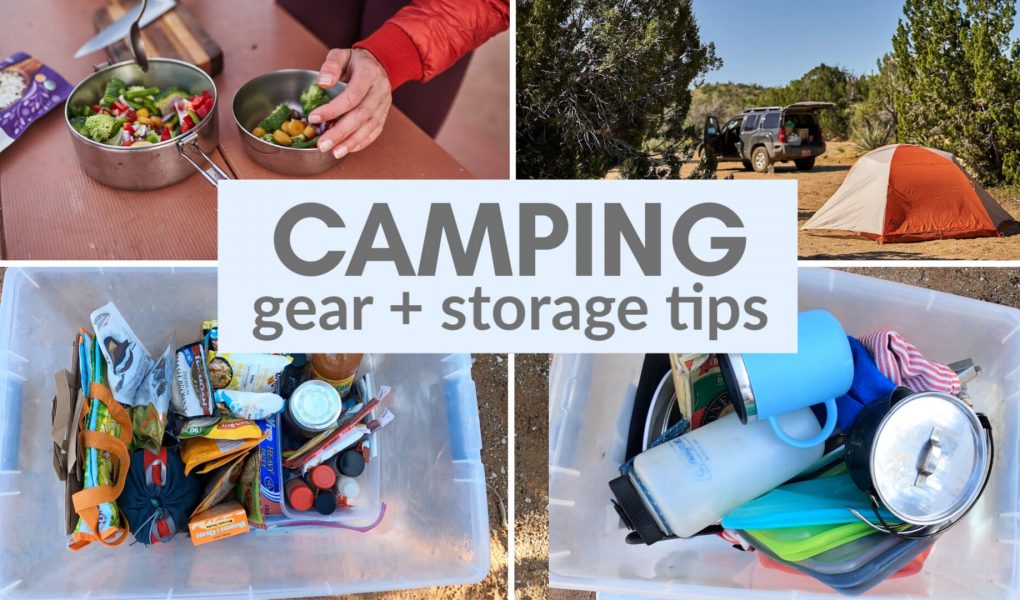A. Camping Hacks From Experienced Campers

1. Fishing Rod Storage
This is for every fishing junkie out there. When the season ends and the gear comes out of the truck, where do you keep your rods? You can buy a fancy storage rack or make one yourself. But, one way or another, you’re giving up valuable wall space until spring. Here’s a quick fix: screw short wire shelves to the ceiling. If the straps don’t fit, cut some wire with pliers. Your rods will be safe out of the way until your next catch. You can also use PVC pipe to hold the fishing rods.
2. Non-slip cup holder
We love reading and having a cold drink in an Adirondack chair during camp, but if we place a drink on the table, even the slightest movement will cause it to slip off the edge. To solve the problem, we cut a hole in the armrest of a 3-inch chair. Hole saw. We took two short, sturdy straps, crossed them at the bottom, and secured the straps under the arm with two-component epoxy glue.
3. Spring toboggan
A plastic snow sled is also useful in low season. We used ours to transport garden waste, concrete bags and plants. The sled glides over grass, sand and gravel with ease. We even use it to transport camping gear from our car to our campsite.
4. Fishing rod organizer

We’re tired of our fishing rods getting tangled up, so we created this simple fishing rod organizer. All you need is a 3 inch diameter PVC pipe and foam pool noodles for this DIY garage storage system. Drill 1in. 10 cm holes in the PVC pipe. Use a knife to cut slits in the foam noodles, keeping them 4 inches apart. Orient the pool noodles on the wall so that at least two of the slits are over the latches. Separate these grooves, slide one washer in and screw noodle 2 inside. On the wall. Screws. Then screw the PVC pipe into the wall below at a comfortable height and insert your fishing rods.
5. Swiss Army “Tinner”
I have a multitool that I love and a beautiful, super sharp knife. They are going to camp and fish with me. But the knife that stays in my pocket every day of the year is the classic Swiss tinsmith. It’s affordable for most campers, so losing it isn’t traumatic. it’s lightweight and compact; and I find myself using the Phillips screwdriver about a thousand times every weekend. It’s not perfect (I wish the knife had a sharper edge) but it’s “the one that’s used in my retirement life.”
6. PVC knife holder
Carrying kitchen knives safely for picnics and camping trips is a challenge. For example, a reader made knife holders with 2 tubes and PVC caps. He glued the cap to one end and marked the unglued cap with an “X”. So he always knows which end to open.
7. Backcountry repair equipment
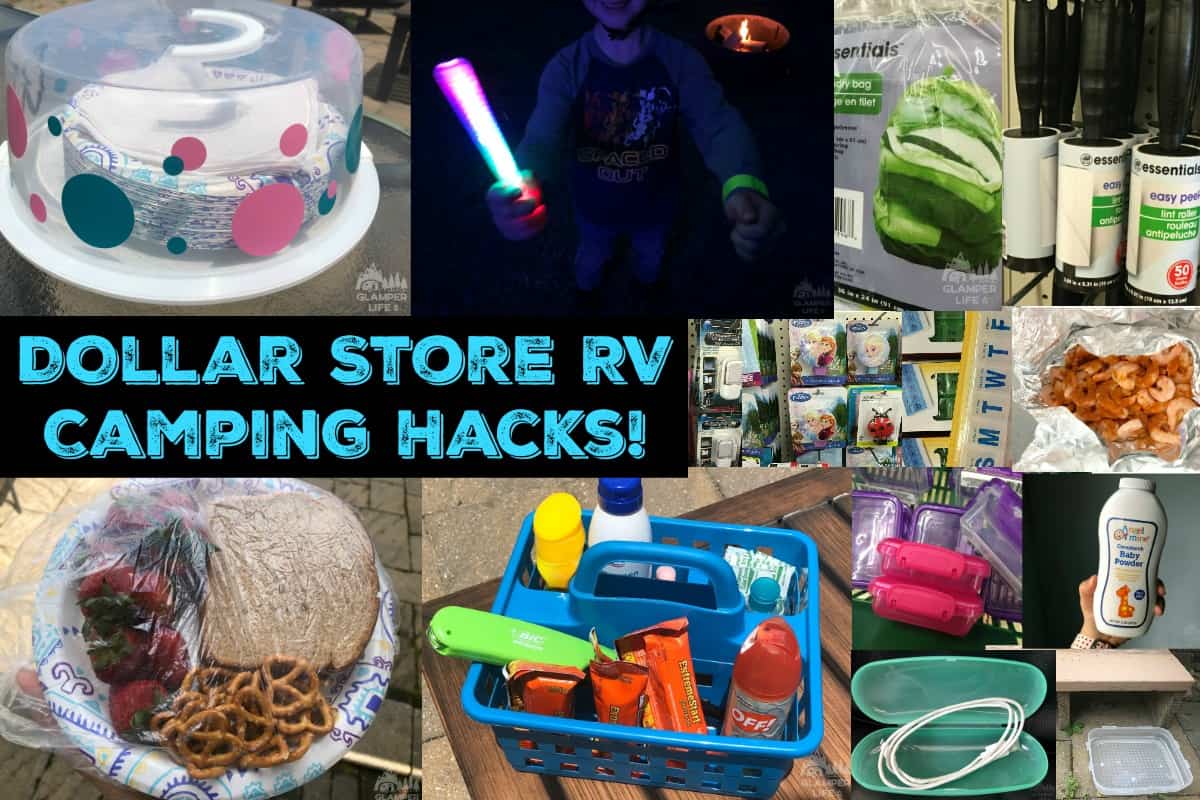
“I spend a lot of time outdoors: canoeing, backpacking, fishing, camping? They call it that. And as a do-it-yourselfer, I feel compelled to take a repair kit with me wherever I go. Of course, the kit will vary depending on the trip, but here are some things I wear a lot. Some are pretty obvious, like duct tape, paracord, zip ties, and a multitool. But not the others: a piece of aluminum tubing that can slide over the frame of a broken tent can be travel protection. With a lightweight magnifying glass, you can really see what you’re doing when making minor repairs. And the fine yarn is one of the most useful items you can carry around. Wrap, twist, “stitch”…. It is strong, heat resistant and does not stretch. I’ve used it a dozen times to fix everything from my boot to a canoe. ”
8. Pizza take away
For those who love to bake pizza, there are propane-powered pizza ovens that are easy to take to camp, to the beach, to the trunk, or to your weekend spot.
9. Rechargeable travel flashlight
Portable flashlights can light up your night walk or your dining table when you’re dining under the stars. Buy a rechargeable LED flashlight that charges for hours and is perfect for overnight camping. Lower it or turn it off to save load until you need it. You can also take it camping and use it to light up the tent while snuggling up in a sleeping bag.
10. Accessories for chicken beer cans

A trend toward grilling is beer canned chicken (more commonly referred to as “beer butt”). Here’s the recipe: open a can of beer or soda, place it in the center of the grill and place a chicken on top (egg layer facing down). The liquid in the can should keep the meat moist and add some flavor (I can’t feel any difference, but at least the bird stays moist). Simple process, but the entire system tends to tip over and spill the beer or lemonade. This is where the Old Smokey Products beer can chicken rack comes into play. The grill supports the chicken above the can and has a wide base to prevent it from rolling. It’s a must for all beer can chicken cooks.
11. Ties without knots
Attaching a load of lumber, a kayak, camping gear, and other things to your vehicle with ropes can be a daunting task, especially if you’re an inexperienced knotologist. It’s even more painful when it comes to untying the knots. Nite Ize Figure 9 makes tasks quick and easy. Wrap the rope around the aluminum bracket (instructions are engraved directly on the device) and the rope will be securely attached. Figure 9 also works very well with ropes used to set up tents and secure tarpaulins. The small tie guarantees 50 pounds. Charges. Large tie protects 150 lbs.
12. Classic camper
Would you like to bring a small amount of tape just in case? (If your tent is leaking, your jacket rips, you catch a blister, whatever…) Wrap something around a water bottle or other cylindrical object and it’s well within reach.
13. Canvas mooring straps
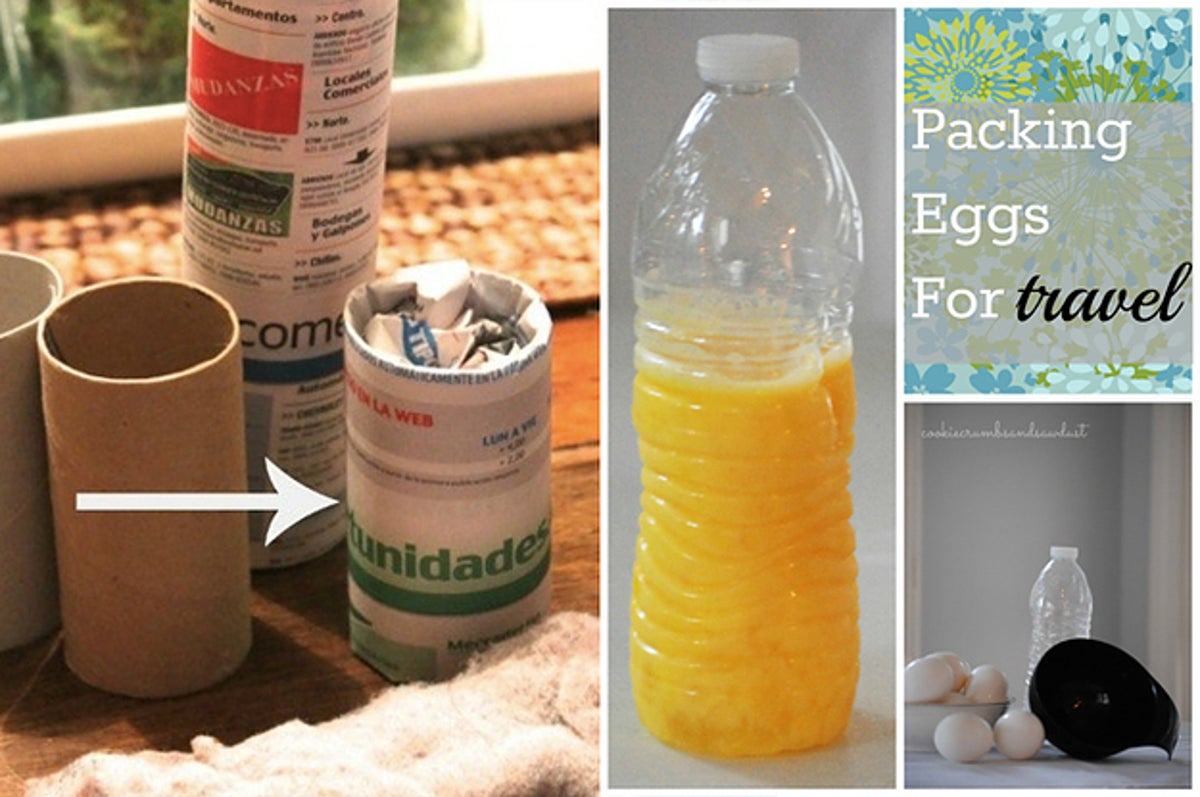
You have it. Everyone does. These ubiquitous plastic tarpaulins with metal grommets. But it seems that tarpaulins are always too big or too small. Eyelets are never in the right place to tie and tear in the wind. Grabbit Tool Co. has a cool system to deal with all these headaches. The EZ Grabbit Tarp Tie Down lets you mend enough tarps to build a large top or simply cover a large pile of wood. Since these lashings can grip a tarpaulin anywhere, you can continue to use a tarpaulin even after the grommets have been ripped off. Another style, the dog bone, allows you to attach a tarp to a structure, for example, to make a shelter or to make it weatherproof after a roof has been ripped off.
14. Fishing tackle
We bought some diamond sharpeners for our camping tree and used them to keep things sharp in our fishing box. Things like hooks and knifes are sharpened quickly.
15. Grilling on the go
Many grills are called “portable” – usually this means they are just small. But the rugged Grill2Go from Char-Broil was designed to be dragged. It has a sturdy base, a closable lid for transport, and works with portable propane bottles. For those big grate outlets, it can be operated on larger propane tanks with an optional hose and adapter. It is equipped with an infrared grill surface, which makes sense given the proximity of the burner to the grill. It’s a perfect barbecue for camping, unauthorized use and road trips.
16. Sturdy labels for soft bags
When you carry soft-sided bags, such as camping backpacks, gym bags, and tool kits, you want labels that can be crumpled, crumpled, soaked, pulled, dropped, and rolled. They can be hard to find, but a good solution is nylon straps (available at camping and fabric stores) or short tethering straps. Simply tie the web around the strap of your bag and tag it with a waterproof marker.
B. 14 Camping Hacks For Families
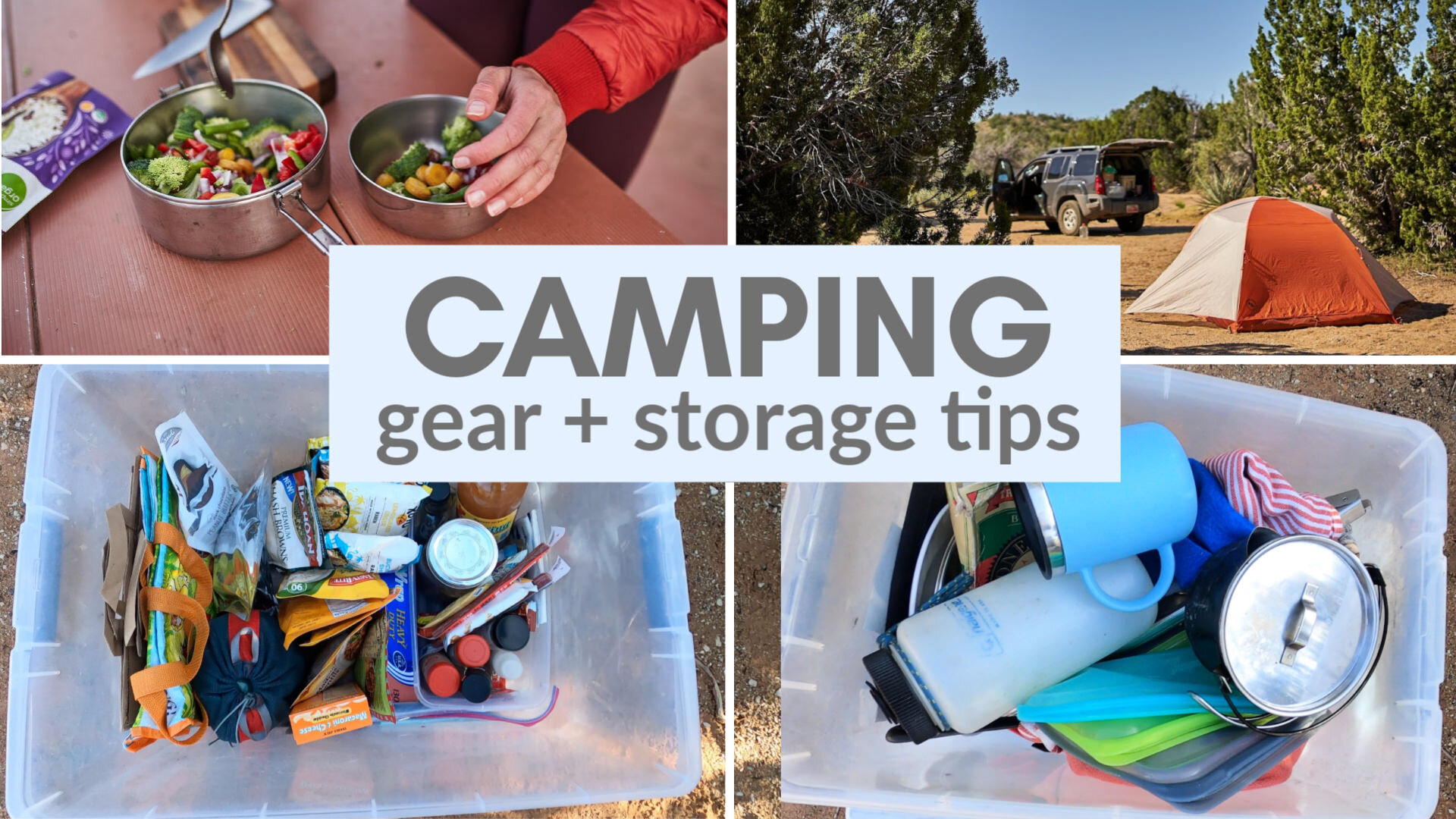
Karen Ung did a one-finger hack to set up the family camp. As soon as her crew arrives, she presses a timer. Like this race against the clock, camping hacks can be anything that simplifies and optimizes a family’s outdoor experience, from reusing equipment to harnessing the energy and imagination of campers. These shortcuts to creativity can be creative and fun ways to take family camps to another level of simplicity, organization, and local fun.
1. The suitcase to set up a tent
The benefits of spending time in nature are well documented – especially when it comes to children. Better mental and physical health? To check. More well-being and less behavior problems? He adds that the positive results of camping together with families go beyond any checklist for a better outdoor life. On the one hand, outdoor adventure encourages courage and perseverance in children, according to a study by the American Environmental Education Association. The mental muscles of resilience grow stronger when faced with unpredictable but more or less manageable challenges.
2. Hack the camp
Makeshift fixes with changing weather, mischievous creatures, and the inevitable forgotten gear make even a weekend outdoors an adventure. The key is to get kids to participate in the hacking experience. “Don’t do it all alone – include the kids,” says Ung. “You’ll have a lot more fun being a participant than just being an observer.”
3. Drink and eat

- Ice to water. Instead of buying ice for the fridge, fill a jar with about two-thirds of it, freeze it, and use it. When it thaws, clean drinking water is available, says Mizejewski.
- Less s’mores of chaos. Bring ice cream cones, mini marshmallows, bananas, nuts and chocolate chips. Let your kids fill the bags with all the goodies, wrap them tightly in aluminum foil, and heat them on a grill over the embers of an open fire or on the camp stove.
- Frozen dinner. Make camping dinners as easy as a snap cap, bringing in frozen stews that thaw in the fridge. Preparing pre-portioned snacks also saves time. “I don’t want to wash and chop vegetables at camp,” says Ung. And camping might be the best excuse to empty your kitchen drawer full of packets of ketchup and soy sauce.
- Omelet ready. Before leaving the house, ask each family member to prepare a plastic bag of beaten eggs and favorite omelet ingredients. That first morning at camp, drop the bags into a pot of boiling water on the camp stove, wait a few minutes, and serve breakfast. You can even use freshly scrubbed frisbees as dishes to avoid throwaway dishes.
4. Lighting it up
- Water lamp. Wrap the handle of a headlamp around the body of the filled jug or other clear water bottle so the light points inward. Voila! A camping lantern. (Add a carabiner for hanging.) Ung also recommends bright, solar-powered LED lights that can turn any camp into a firefly festival.
- Light stick GPS. If you prefer the dark but still want to know where the kids are, hang a reusable glow stick around each of their necks.
5. Stay together
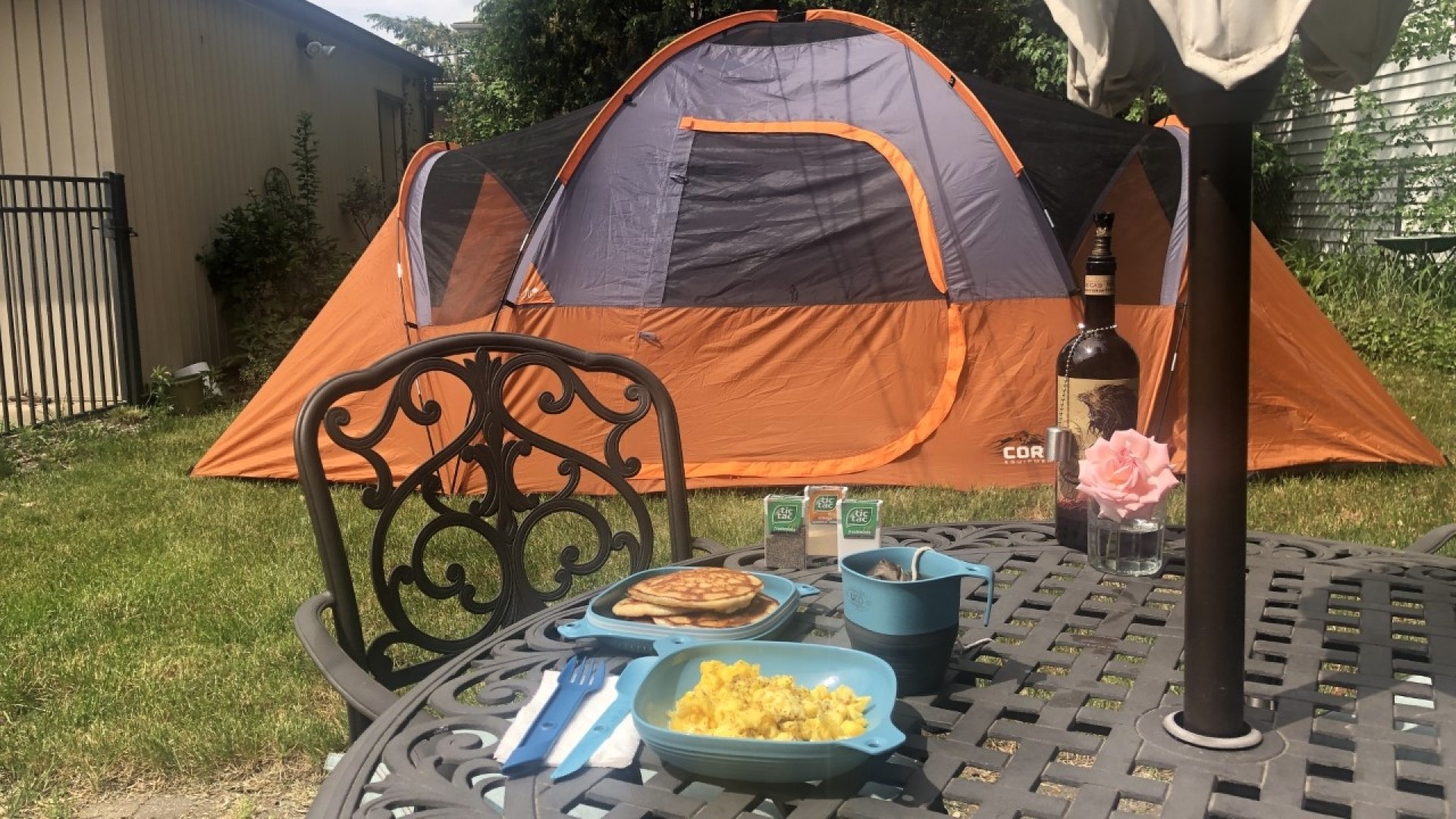
- Hang everything. Camping equipment tends to spread out and disappear. A wall cabinet organizer makes room for everything – repellent and sunscreen, first aid kit, flashlights, snacks, books, art supplies, etc.
- Camp Caddy. Give a cardboard six-pack bottle holder a new career as a table organizer for utensils or spices. The handle makes it great for carrying all your belongings and folds up later for easy storage. Plus, you can have your little artists decorate the outside.
- Recycled bottles. Empty vitamin bottles and other plastic containers are a perfect waterproof storage for matches, spices, medication and other storage needs, so you don’t have to pack the entire box or jar. Children and a marker can be recruited to write the labels.
6. Creature comfort
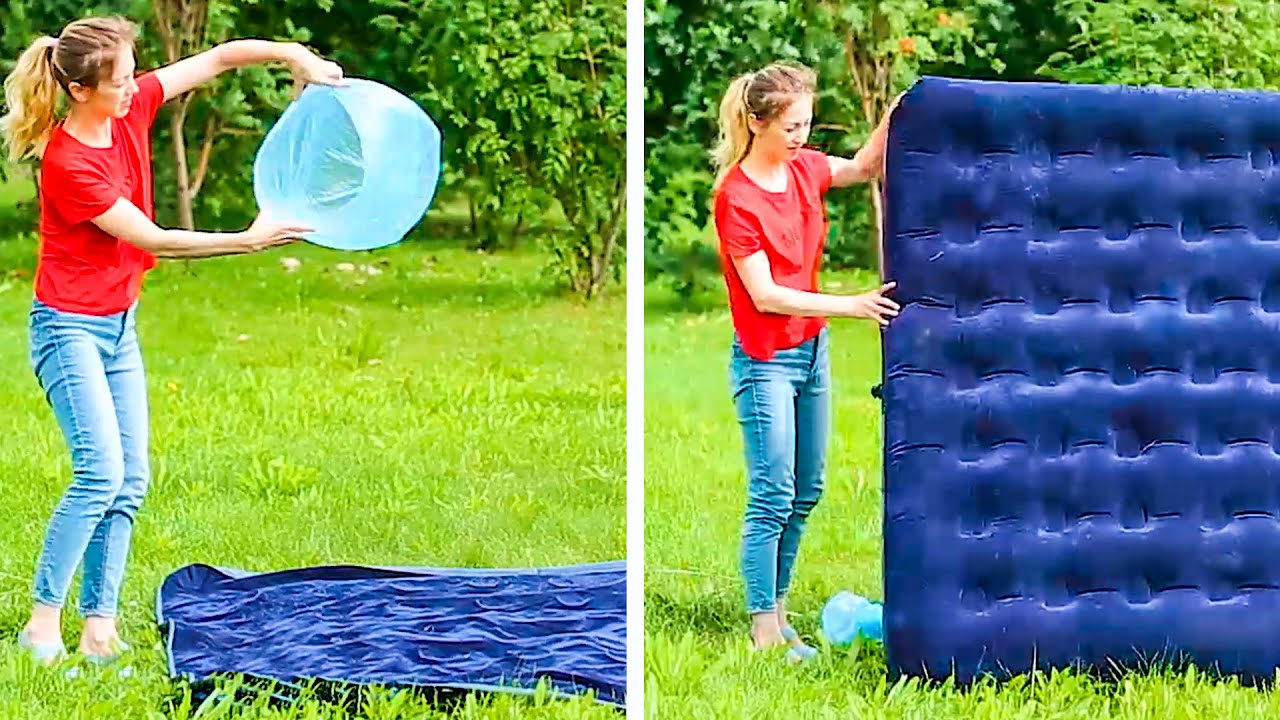
- Starter. For a quick, warm lighting, have the children dip the tumble dryer fluff in petroleum jelly and stuff it into empty toilet paper tubes or cut cardboard egg cartons. For a more dazzling fire, Mizejewski recommends flavored tortillas or cheese squiggles — and their orange powder — as bait.
- TP in a can. To keep the toilet paper dry, cut a narrow vertical opening in the side of a plastic coffee container and pass the loose end of the TP through the opening.
- Fight against insects. Mosquitoes and other biting insects can quickly take the joy out of camping. Bouquets of dried herbs such as sage, rosemary or eucalyptus that are spread over the fire are a traditional way of smoking them. But it’s always good to have a child-resistant insect repellent as a back-up.
- Block out this stench. A stinky little house is the archenemy of many young campers. A swab of mint ointment or peppermint oil under the nose makes nature’s call a little more relaxed.
- DIY Sunglasses. The tape has a million and one uses, and here’s another one: emergency sunglasses. Tear off a 12-inch long strip. Gently fold it in half to make the sticky sides stick together and remove excess glue. Mark where the eyes will be, then cut two narrow horizontal slits. Add earloops to complete the DIY.
